Castillo Suhail overlooking Fuengirola in Malaga province, Andalucia, is a fortress built during the Moorish occupation. Renovated many times since it was the scene of the Battle of Fuengirola in 1810
By Nick Nutter | Updated 4 Jun 2023 | Málaga | Places To Go |
Login to add to YOUR Favourites or Read Later
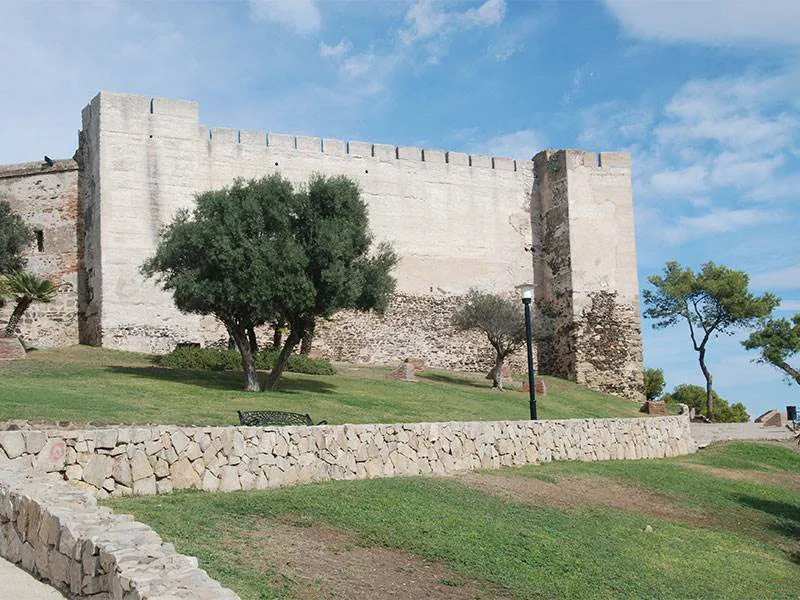
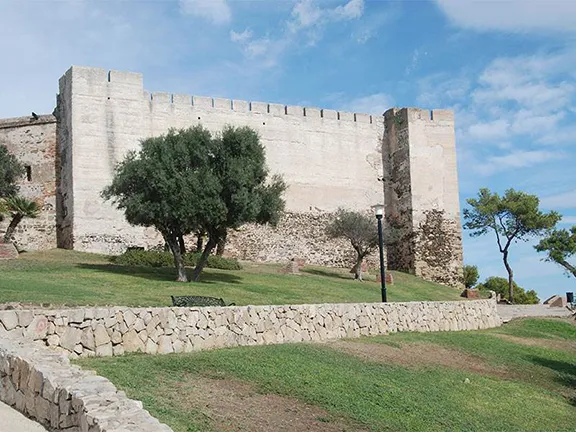
Suhail Castle Fuengirola
In October 1810, Castilo Sohail at Fuengirola, a previously unimportant fortress on the south coast of Spain, became famous throughout Europe. In that month 457 Polish and French troops, defending the castle, drove off 4,500 British and Spanish soldiers who were intent on capturing the stronghold. The battle became known as the Battle of Fuengirola.
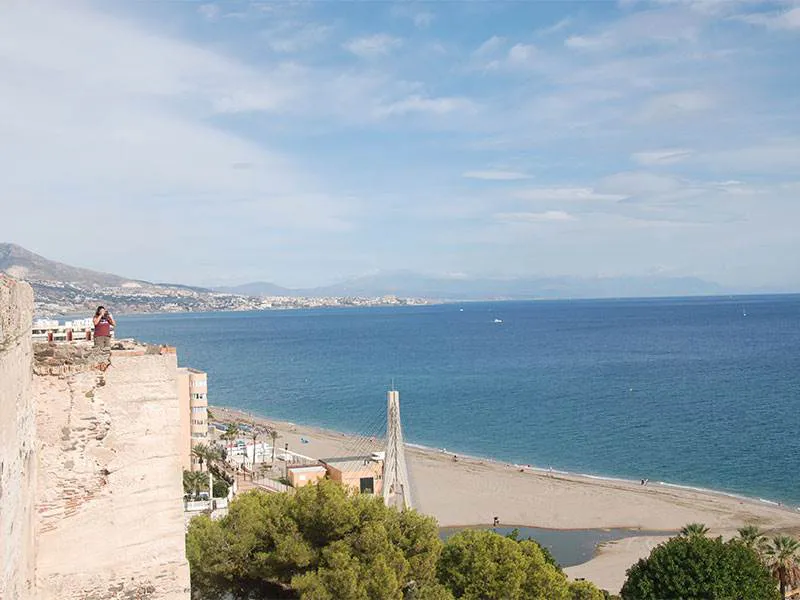
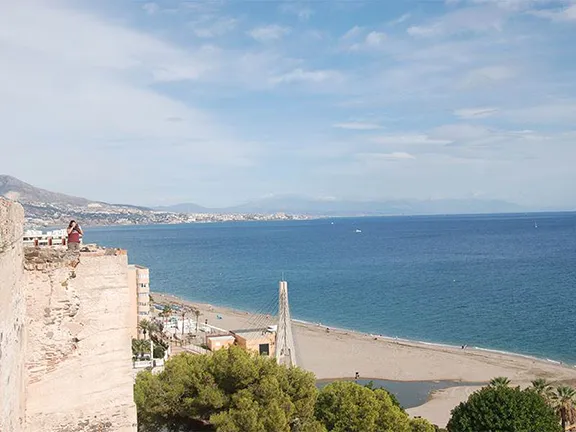
Battlements on Castilo Suhail
Sohail Castle had its origins when the Romans occupied Andalucia, but none of their architecture survives. What you see today is as a result of a fortress built in 956 AD by Abd-ar-Rahman III designed to strengthen the coastal defences.
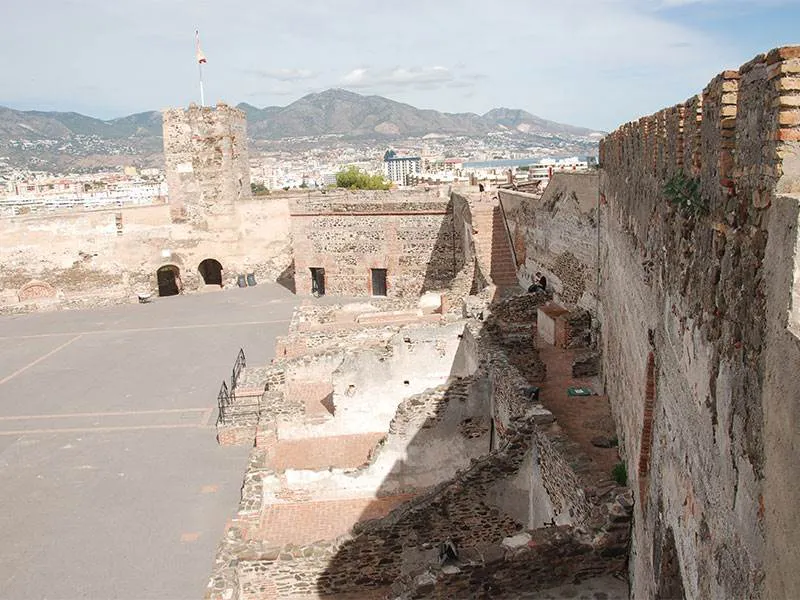
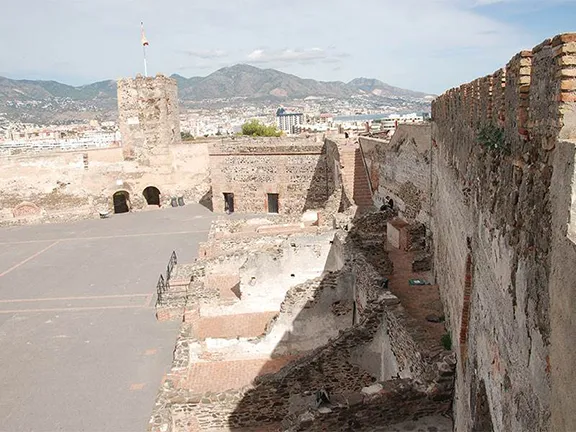
The keep showing foundations of guard house and barracks
About 400 years later, during the 14th century, the settlement that had grown up around the castle was destroyed by fire and the population left for nearby Mijas. Then followed a period of neglect until after the area was reconquered by the Christians in 1485. The castle was repaired to some extent after the reconquest and used as one of the coastal defence positions to warn of impending attacks by Barbary pirates. Modifications were made to cater for cannon and an increase in guards until, by the 19th century, the castle appeared pretty much as it does today. The whole structure decayed after the Peninsular War until it was renovated in the year 2000 and re-invented itself as a venue for festivals and concerts.
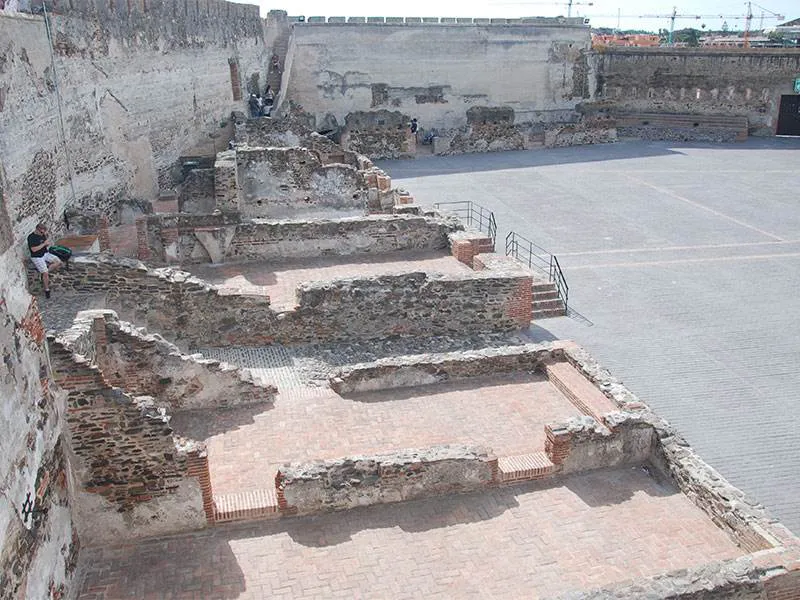
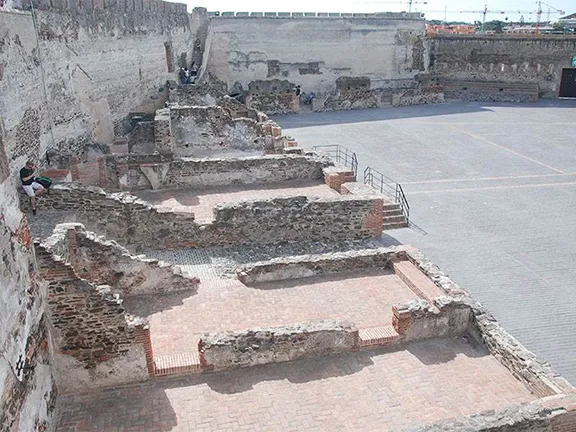
The keep showing foundations of church, stables and storerooms
Entrance to the castle is through the original gate built by the Moors. The path then leads between two defensive walls from which anybody breaching the first gate could be attacked from above. A second gate led into the central keep of the castle, above which the original homage tower overlooks the whole edifice. Within the walls, the foundations of various buildings are preserved, giving a good idea of how the place looked in its heyday. You will see a guardhouse and the quarters for the military staff, the stables and a church, a warehouse and a later addition, a furnace room for heating shot. On the battlements, facing the sea is a gun platform that, during the Battle of Fuengirola, had two cannon installed. There are now three muzzleloaders of about the same vintage.
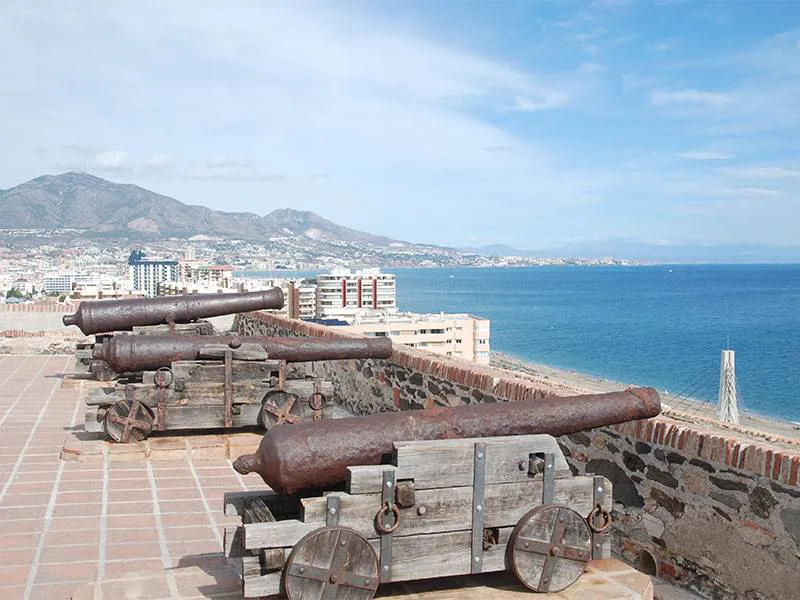
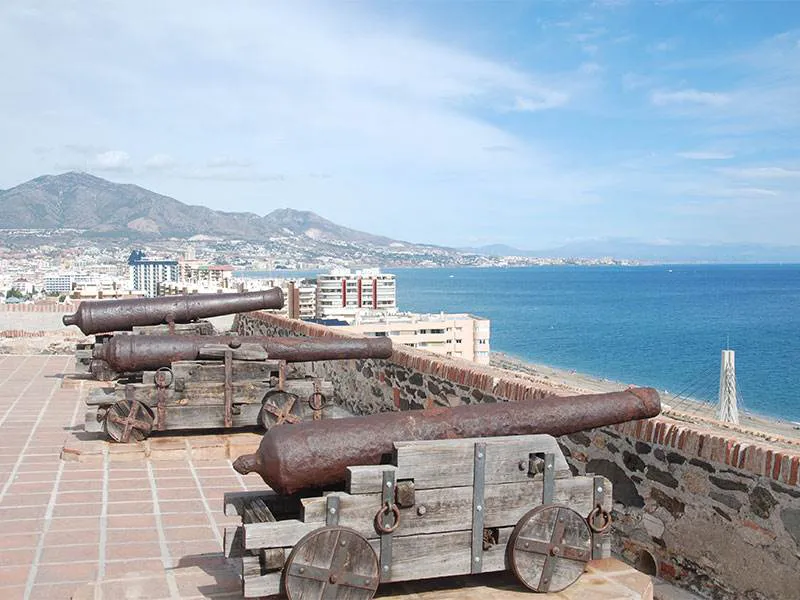
Gun platform. Only 2 cannon mounted in 1810
The only significant action that took place at Sohail castle was the aforementioned Battle of Fuengirola. During the Peninsular War (1807 – 1814), Napolean Bonaparte put his brother, Joseph, on the Spanish throne. Combined armies of British, Portuguese and Spanish set about removing Joseph and re-instating the Spanish monarchy. Much of the Spanish resistance came from partisans who were supplied by the British out of Gibraltar. The French positioned troops in the area to try to prevent arms getting to the partisans. At Sohail castle, Captain Franciszek Mlokosiewicz was in command of 150 Polish soldiers from the 14th Infantry Regiment and 11 French Dragoons. A detachment at Mihas, commanded by Lieutenant Eustachy Chelmicki, consisted of 60 infantrymen and a third detachment was based at Alhaurin, 200 infantry and 40 dragoons commanded by a Major Bronisz.
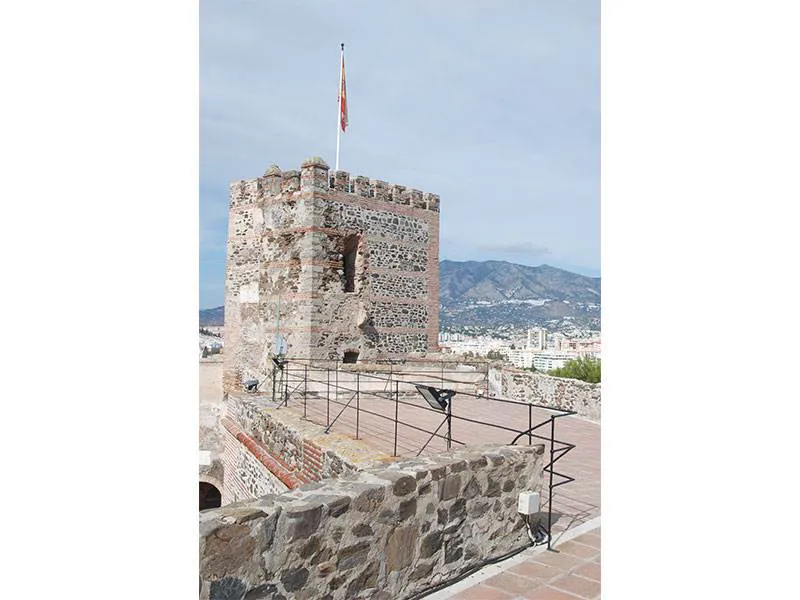
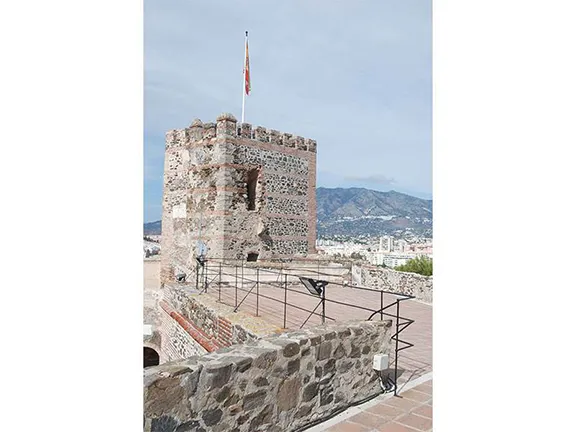
Homage Tower
In October 1910, Major General Lord Blaney decided to capture the fortress on his way to take Malaga, having decided that the beaches just south of Fuengirola were ideal for landing his troops.
He assembled a force of 1,700 men taken from the 2/89th Regiment of Foot, a battalion of international deserters from the French army, an artillery unit, naval gun crews and a Spanish Toledo Regiment. The force embarked on a fleet consisting of two frigates, HMS Topaze and HMS Sparrowhawk. Topaze was a 32 gun French frigate that was captured by Lord Hood at Toulon in 1793 and taken into service. The frigates escorted five gunboats; all designed to carry a gun that could bombard shore positions, several brigs; fast, manoeuvrable twin-masted vessels, and transport sloops.
On the 14th October Blayney disembarked his forces in Cala Moral Bay, about 3 kilometres southwest of Fuengirola. They were joined by a small group of Spanish partisans who reassured Blayney that Castle Sohail was lightly defended and the whole group started marching north with the naval force, a few hundred metres offshore, sailing in parallel. At 2 pm Blayney arrived in front of the castle, and an emissary went to the castle inviting the Polish forces to surrender before any blood was spilt. Captain Mlokosiewicz refused, and the British ships opened fire.
Although the Poles only had two light cannon, a Sergeant Zakrzewski, in charge of the small artillery squad, managed to sink one of the British gunboats. Blayney meanwhile led his ground forces in a frontal assault on the castle. During the attack, the commander of the 2/89th Regiment, Major Grant, was killed. Blayney retreated.
That night, Blayney landed his guns and British engineers built two gun emplacements facing the castle. Meanwhile, Lieutenant Chelmicki, alarmed by the artillery fire he could hear from his base at Mijas, took his troops to Fuengirola, slipped through the British lines and reinforced the garrison at the castle. Bronisz was also alarmed and marched his force to Mijas. Blayney had, belatedly, sent a 450 strong Spanish-German unit to Mijas to try to prevent just such a reinforcing action by Chelmicki’s troop. They proved no match for the 240 men commanded by Bronisz and were dispersed after a fierce Polish bayonet charge.
At Sohail castle, hostilities recommenced at dawn with a bombardment of the fort from the newly built gun emplacements and the ships offshore. Sometime in the forenoon, one of the castle towers was destroyed, but the defenders held on, taking heavy casualties. At about 2 pm that day, a British 74 gun third rate ship of the line together with a similarly sized Spanish man of war, arrived off Fuengirola with another 932 men from the 1/82nd Regiment of Foot.
In the confusion of the arrival of these troops, Captain Mlokosiewicz decided to attack the artillery positions that were causing his men so much grief. He sallied from the castle with 130 soldiers, leaving the wounded and only a few able-bodied men to carry on the defence. Despite being outnumbered approximately 10 to 1, the Poles sent the Spanish regiment protecting the guns, back down the hill in disarray. Mlokosiewicz’s men turned the British guns around and started shelling the British positions with more enthusiasm than accuracy since none were gunners. Even so they managed to prevent the British regrouping for over half an hour. Long enough for Major Bronisz and his men to arrive at the scene.
Blayney managed to regroup and launch a counter-attack on the Poles holding the gun emplacement. The Poles blew up the gunpowder supplies and started to retreat to the castle. It was at this point that Bronisz, with 200 men, attacked the advancing British left flank. Mlokosiewicz immediately turned his men around and, with 30 French cavalrymen from the 21st Dragoon Regiment, attacked the British right flank. Lord Blayney was taken prisoner, and his forces ran to the beach where they were picked up in small boats and returned to the big ships while all the time being harried by their own, once again captured, guns.
The British had lost their chance to take Sohail castle in one of the few decisive defeats of the Peninsula War. On the following morning, October 16th, General Sebastiani arrived at Fuengirola with a numerically superior relief force. The British fleet returned to Gibraltar.
For opening times at the Castillo Sohail click here